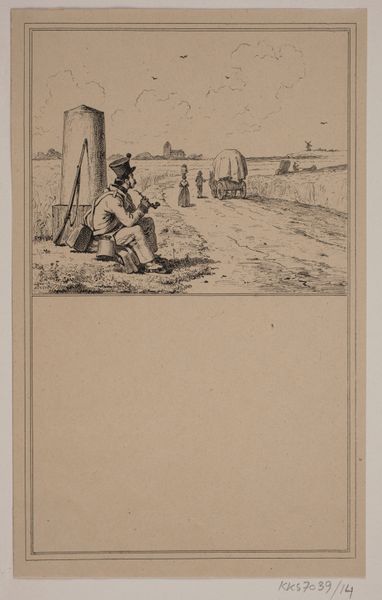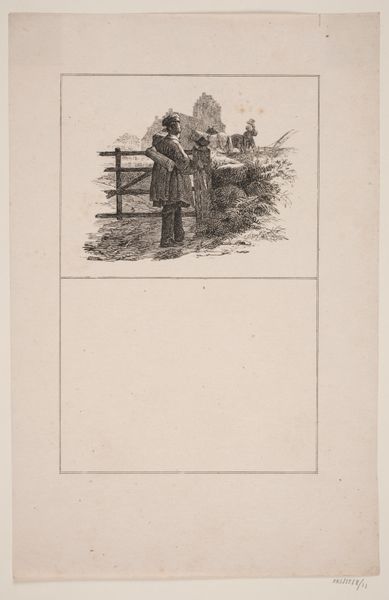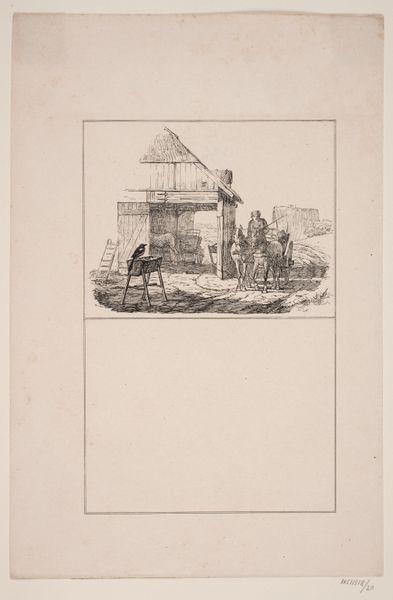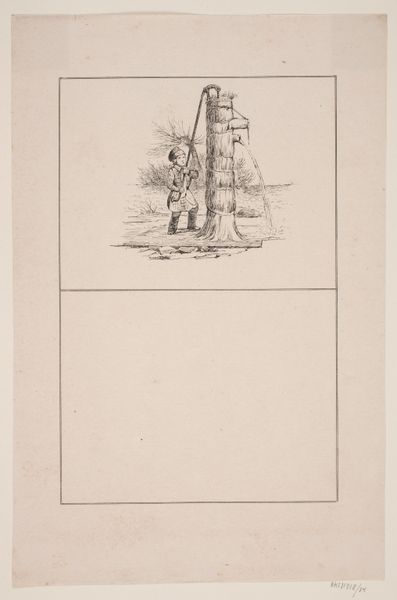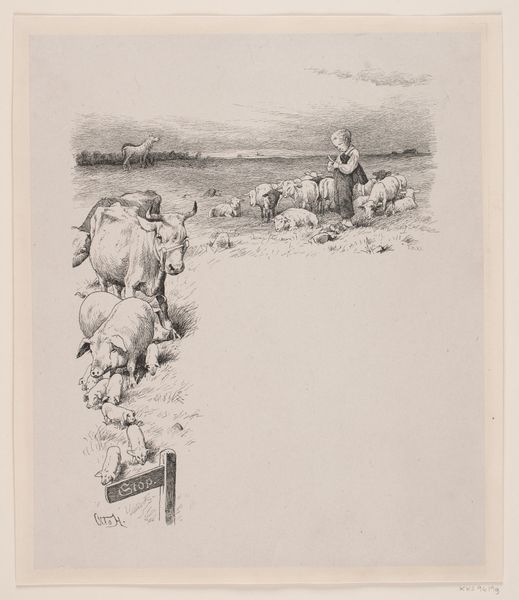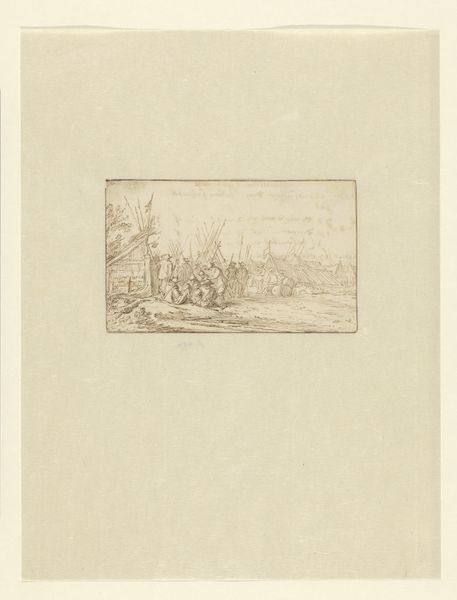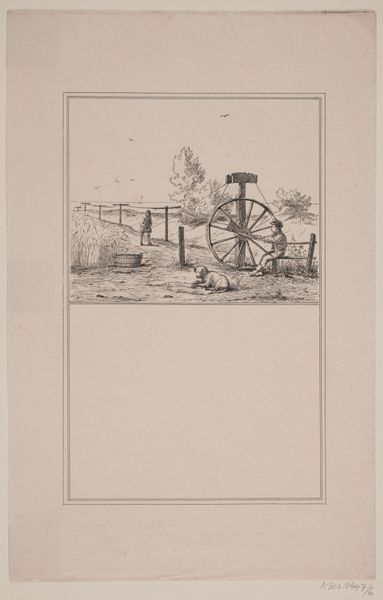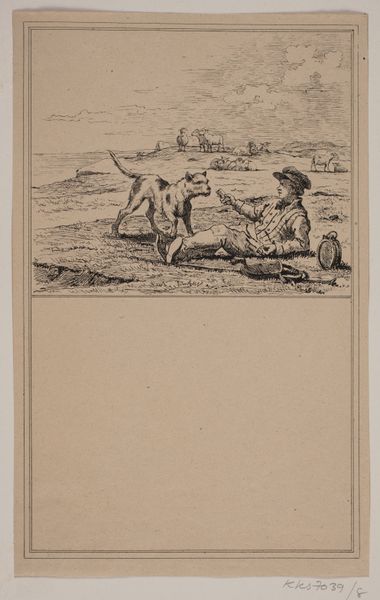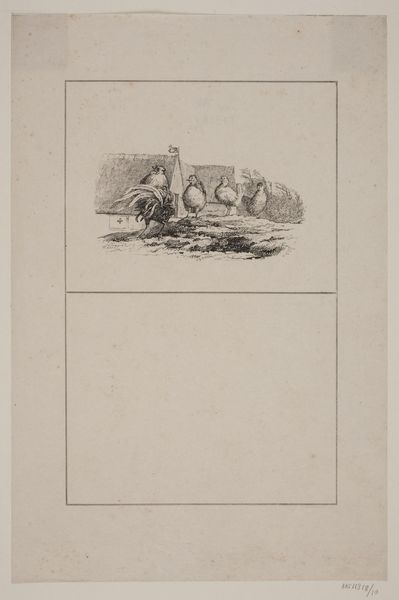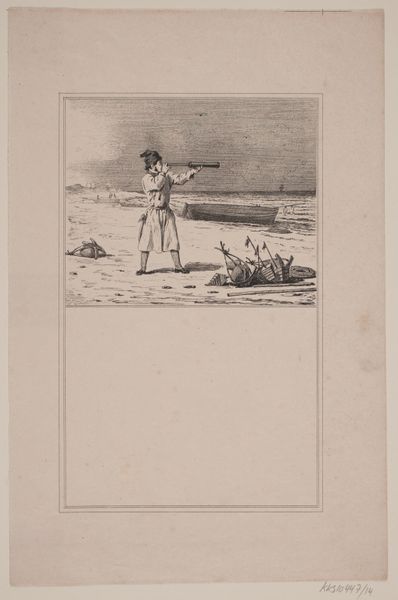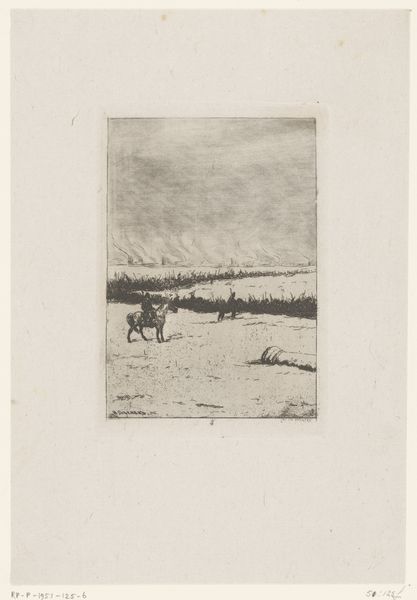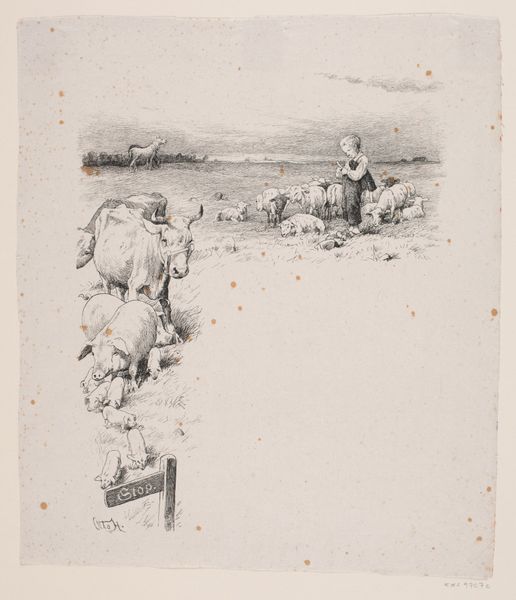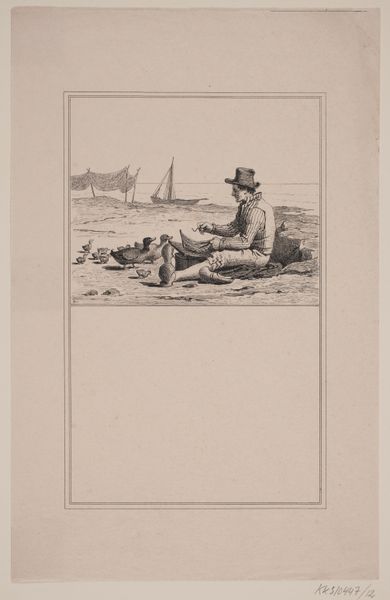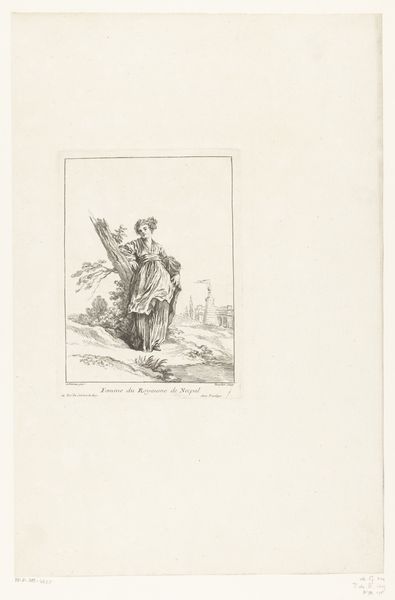
Soldaten på vandring. Prøvetryk til Chr. Winther og M. Rørbye, "25 Billeder for små børn" 1846
0:00
0:00
drawing, lithograph, print, ink
#
drawing
#
lithograph
# print
#
landscape
#
ink
#
romanticism
#
genre-painting
Dimensions: 270 mm (height) x 175 mm (width) (brutto)
Editor: This lithograph by Adolph Kittendorff, "Soldaten paa vandring," from 1846, feels both intimate and expansive. It's striking how such fine lines capture the weariness, and almost boredom, of this soldier pausing along his march. What do you notice in the details of its production? Curator: For me, the lithographic process itself is key. Consider the labour involved in creating the printing stone, the specialized inks and papers used. These prints were made as trial runs, “Prøvetryk”, for a children’s book. This contextualizes the work—how were these images intended for mass production, distribution, and, ultimately, consumption? Editor: So you are saying it's important to think about how the prints ended up in the hands of its viewers? Curator: Exactly. How did images like these shape perceptions of soldiers, of the landscape, within a developing national consciousness for children? It prompts a dialogue about access to art and the materials from which meaning and ideology are constructed. Notice, too, how the 'landscape' genre itself is being deployed – simplified for a child audience perhaps, but embedding particular ideas of nation and territory. It all connects to production and the broader social world. Editor: It's fascinating to consider something so seemingly simple through the lens of materiality and labour. Curator: And perhaps also challenges the traditional boundaries separating high art from a functional illustration aimed at a juvenile audience? What might a traditional art historical account emphasize, compared to this understanding centered on production? Editor: I definitely will consider how the print ended up with the viewer in order to fully grasp this print's artistic expression.
Comments
No comments
Be the first to comment and join the conversation on the ultimate creative platform.
